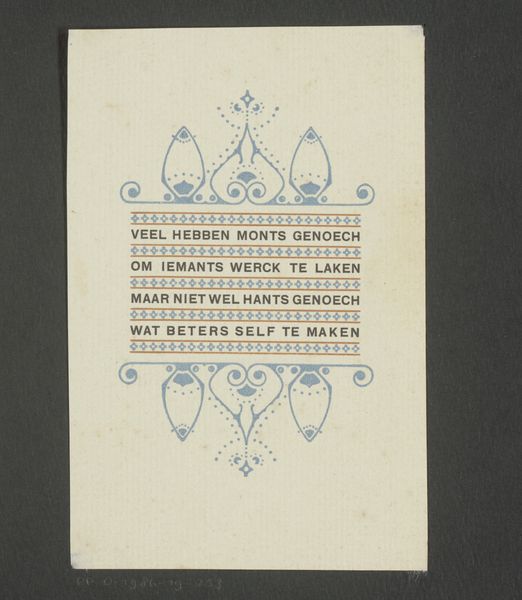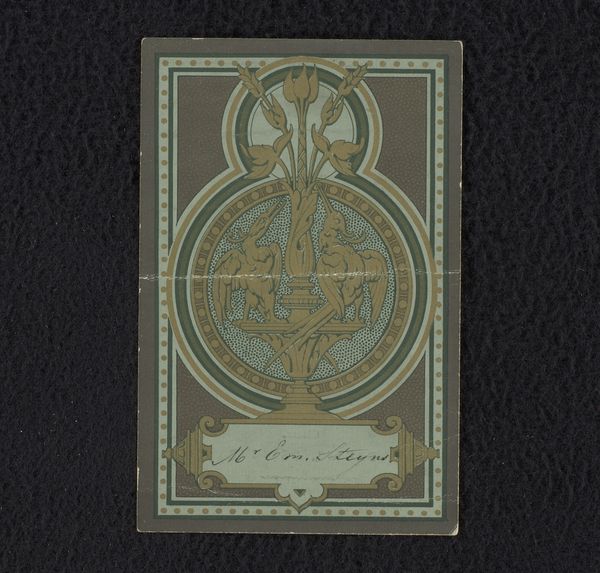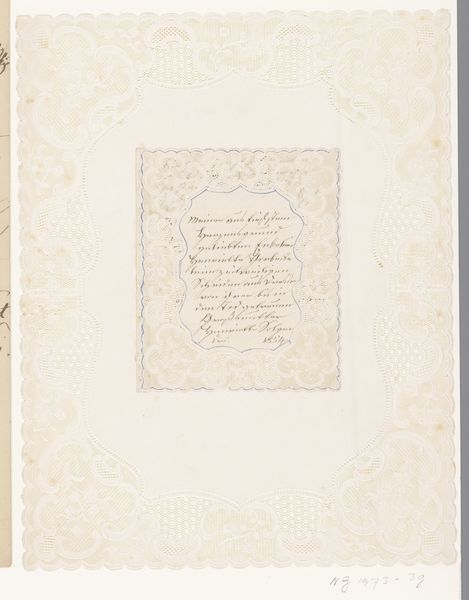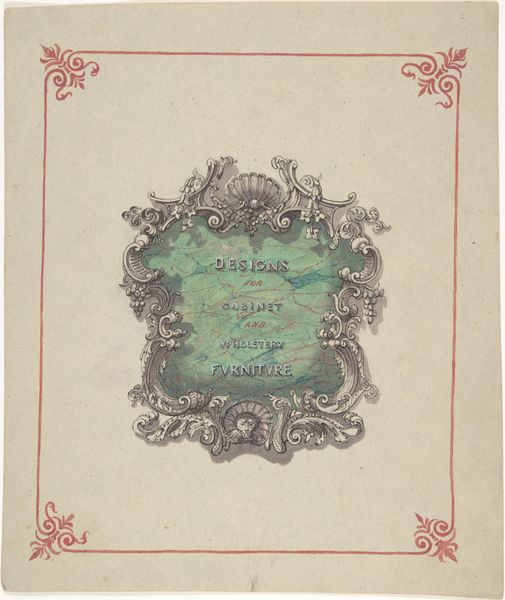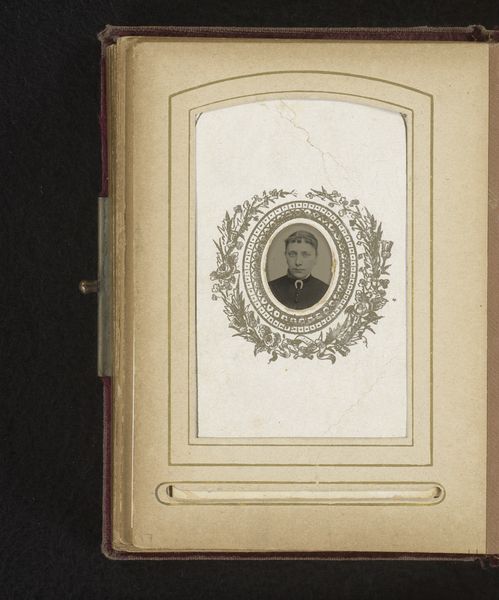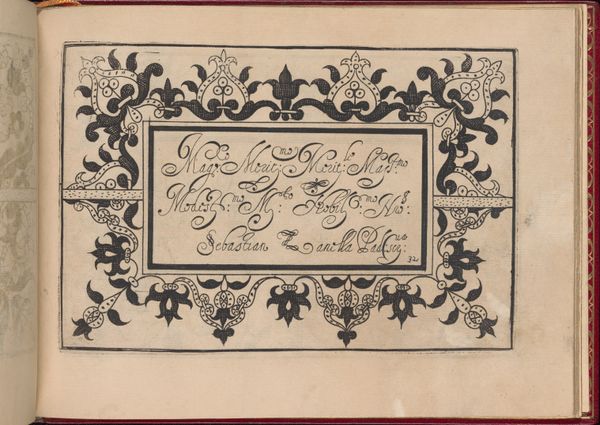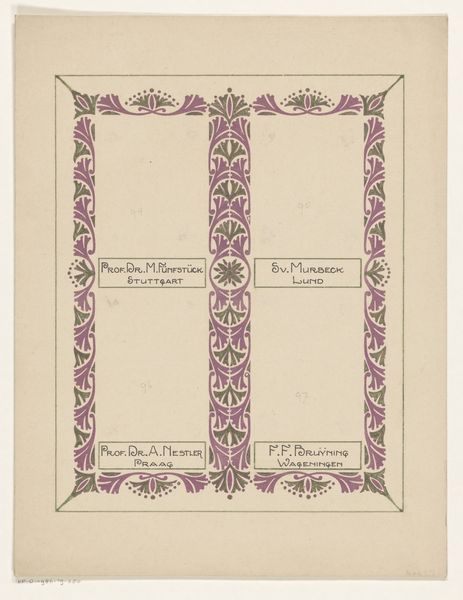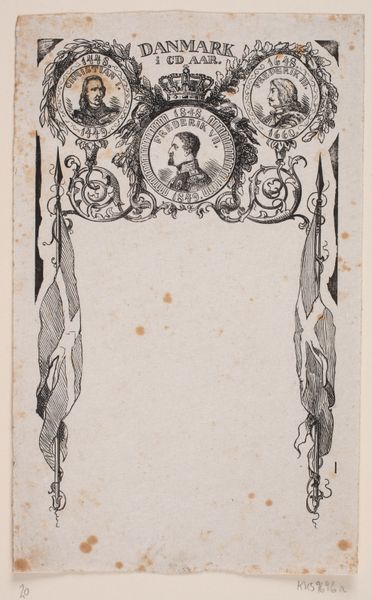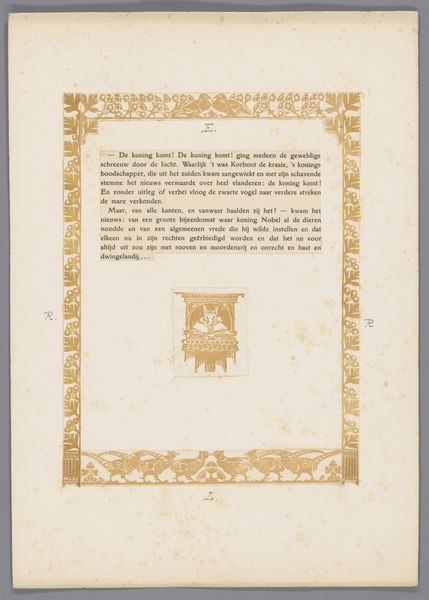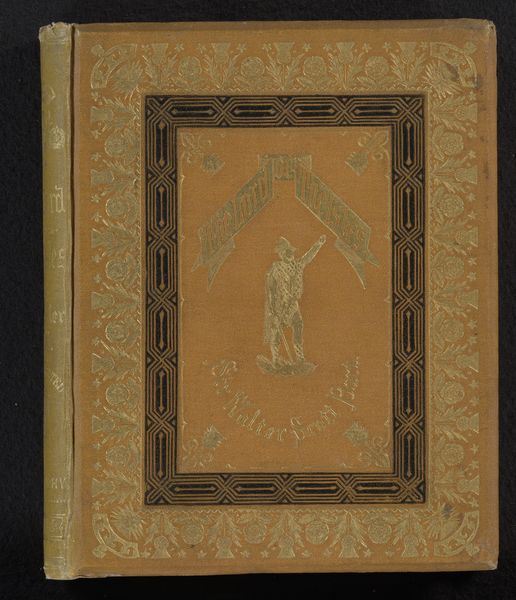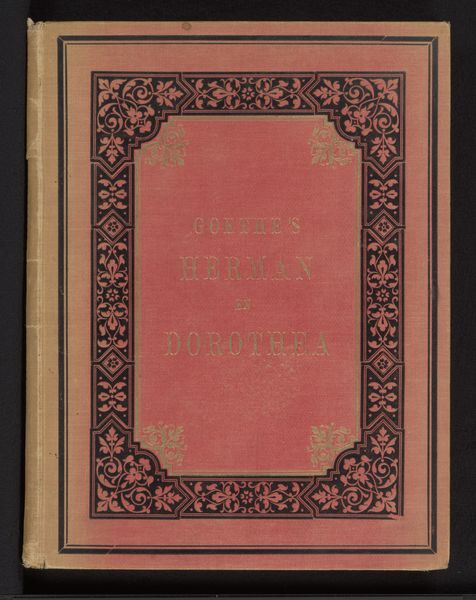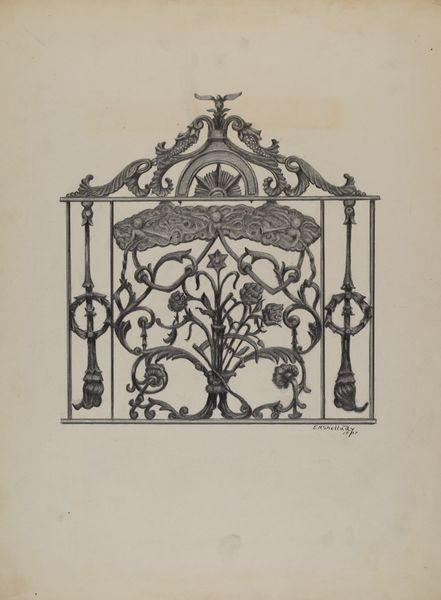
Fotoreproductie van een tekening van een onbekende man aan een tafel met een kat erop c. 1874 - 1900
0:00
0:00
graphic-art, print, paper, engraving
#
portrait
#
graphic-art
# print
#
paper
#
decorative-art
#
engraving
Dimensions: height 104 mm, width 65 mm, width 131 mm
Copyright: Rijks Museum: Open Domain
Curator: Welcome to this presentation of an engraving, circa 1874-1900, known as "Fotoreproductie van een tekening van een onbekende man aan een tafel met een kat erop," created by an anonymous artist. Editor: Well, immediately it feels to me like a fragment from a memory, sepia-toned with ornate decorative elements around the border; and there is an old-fashioned text I would like to learn more about, actually. What a glimpse into the past! Curator: Indeed! It presents us with insights into the decorative styles prevalent in graphic art and printmaking of the period. The ornate designs framing the poem showcase a blend of decorative art and what seems like influences of portraiture conventions. Editor: I'm curious about that interplay—decorative framing devices often were employed to contain idealized, frequently gendered, subjects of virtue and merit. How might the integration of text as content challenge traditional readings? Or expand on them? Curator: Well, the text presents verses I recognize as lighthearted toast which references, in turn, herrings, Puss (cats), and Bullrich's salts (a brand of antacid invented in the 19th Century) in order to wish the addressee many happy returns. This could be interpreted on multiple levels—from the mundane, where the subjects literally enjoy those food and beverage items; or a symbolic play in that herrings, in particular, used to stand in for something erotic, Editor: Fascinating. Food and intoxication, sickness and health—together, these items seem like emblems of life itself. The text gives life to a piece that otherwise might strike people today as more archival than art. Do you believe this specific copy was destined to a personal and affectionate usage, instead of a widespread publicity, given it being hand-lettered instead of industrially typeset? Curator: Very possibly. Ephemera like these engravings played a key role in defining social norms. Its distribution channels probably reveal aspects of identity. While some circulated publicly, as marketing material, the sentimental texts of others were aimed more at solidifying personal networks, and reflecting and strengthening relationships of affect. Editor: Food habits always carry implications in identity, community, but also difference, exclusion, and hierarchies. I would propose analyzing this material from a lens in identity politics, since it reveals narratives from historically oppressed groups, who might celebrate and commemorate resilience strategies from their intimate past, by displaying texts in non-canonical fashion. Curator: Absolutely. Its significance as an everyday object opens opportunities to explore its connections to consumption practices and print culture of its time. It seems appropriate, then, to look further into it to understand the broader socio-cultural context that produced it. Editor: I appreciate the work in historicizing everyday objects of vernacular origin, I would add. As someone studying marginalized voices in cultural production, the recovery of these popular imagery provides an understanding in visual literacy and its potential for advocacy in historically obscured voices.
Comments
No comments
Be the first to comment and join the conversation on the ultimate creative platform.
